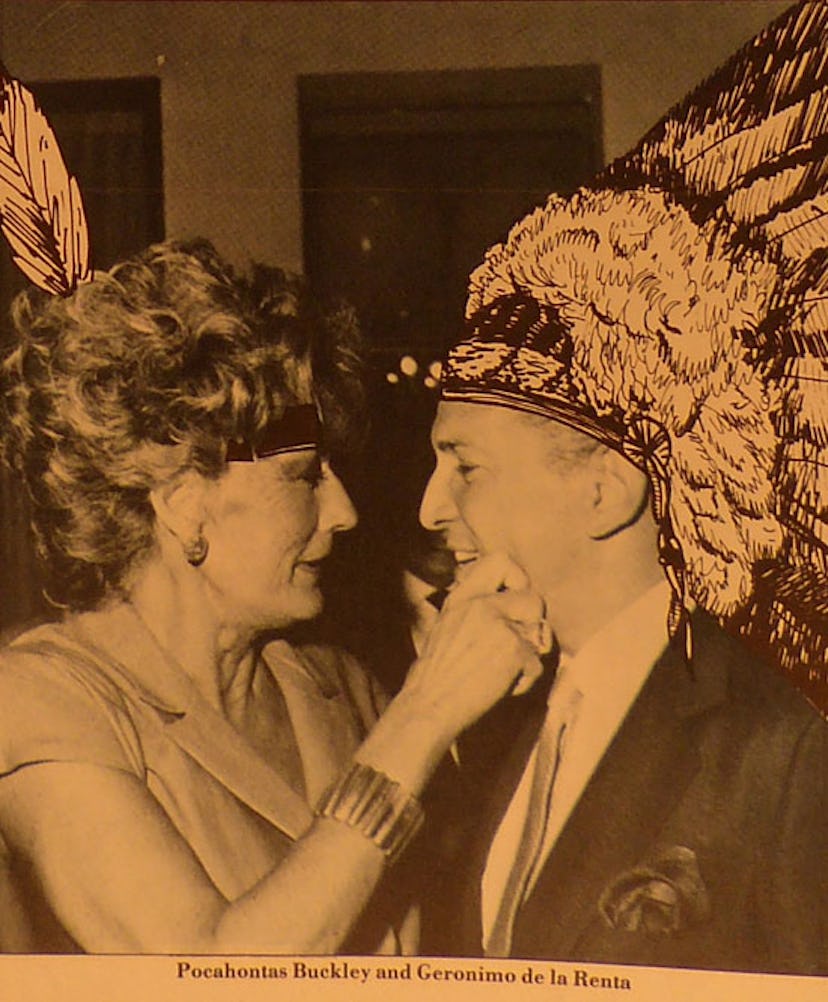What Were We Thinking?: Going Native
Let’s face it: In 40 years of publishing from fashion, art, and society’s front lines, there have been a few stories that, in retrospect, we’d probably like to have back. “The Tribes Of New York,”...

Let’s face it: In 40 years of publishing from fashion, art, and society’s front lines, there have been a few stories that, in retrospect, we’d probably like to have back. “The Tribes Of New York,” published in October 1985, is one of these stories. Sure, you can say, like Lou Reed does in “Sweet Jane,” “You know—those were different times!” But were they really that different? Let’s see. The story—ostensibly an attempt to limn the differences between the city’s various social circles and the allegiances therein—wastes little time in getting to the point:
“It’s the tribal dance of power, the ritual segregation of the braves and squaws who brandish their tomahawks and whoop and yell…” WAIT, STOP THE PRESSES! Forget about “braves and squaws”; it’s probably a general editorial rule of thumb that when one comes across the phrase “ritual segregation” in a story that doesn’t seem to have the word “atrocity” anywhere nearby, someone probably needs to do a rethink. But no: Manhattan’s “tribes” are merely separated into the “Sioux” (“Sitting Bull Blass,” Gloria Vanderbilt, Judy Peabody and Isabel Eberstadt) and the “Apache” (“Pocahontas Pat Buckley,” “Geronimo de la Renta,” and “Babbling Brooke Astor” among them), while a helpful cheat sheet notes the tribes’ Customs, Stomping Grounds, Firewater Preference, and Native Costume, among other helpful attributes.
The story continues: “With a few exceptions, the tribes don’t mix. Their most frequent powwows occur at charity benefits, like the opening of Maxim’s, where they tolerate each other with suspicious decorum. And at Mortimer’s, which every tribe feels belongs to them. The greatest inter-tribal mixers are Bill Blass and Pat Buckley, who paddle their canoes among many tribes, although Blass’s final allegiance is to the Sioux and Buckley’s to the Apache. . . .
“The New York tribes are strong. No one can control or conquer them, and they are quick to hit the warpath. They believe in all their own magic. They love to be around each other. Tribal chieftains and princesses like nothing better than to sit around the campfire, drink a little firewater and shoot the buffalo.”
As the story doesn’t carry a byline, it’s difficult to assign blame, but in any case this would be a tricky task. Which is more regrettable: The text—or the photos, which have been doctored to depict the various “chiefs” and “squaws” in full-on tribal headdress? We’ll let you be the judge.
Photo: Condé Nast Archive